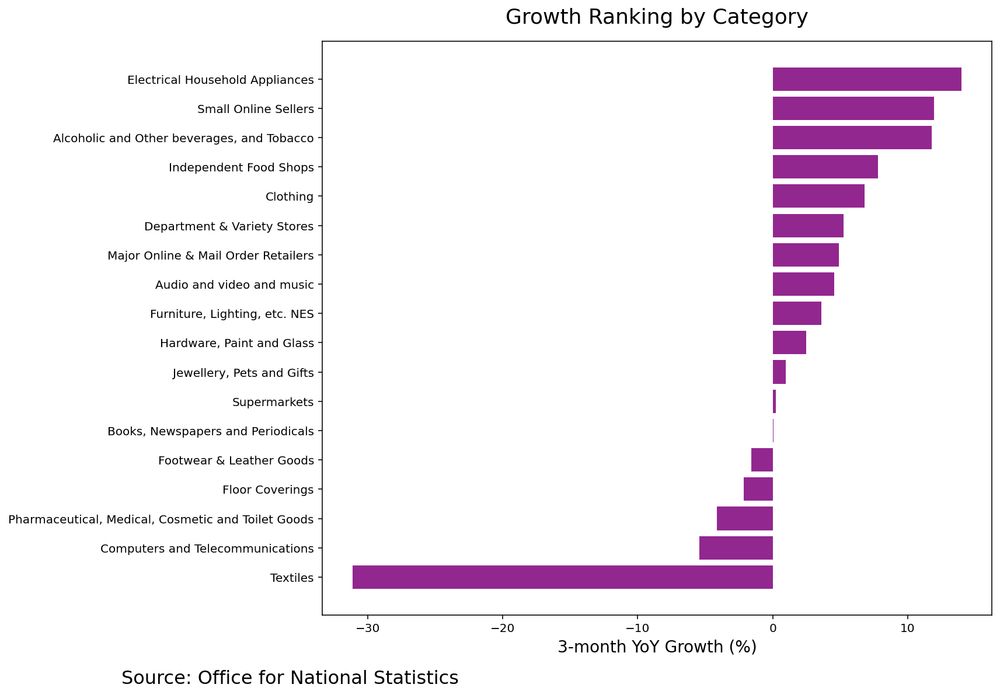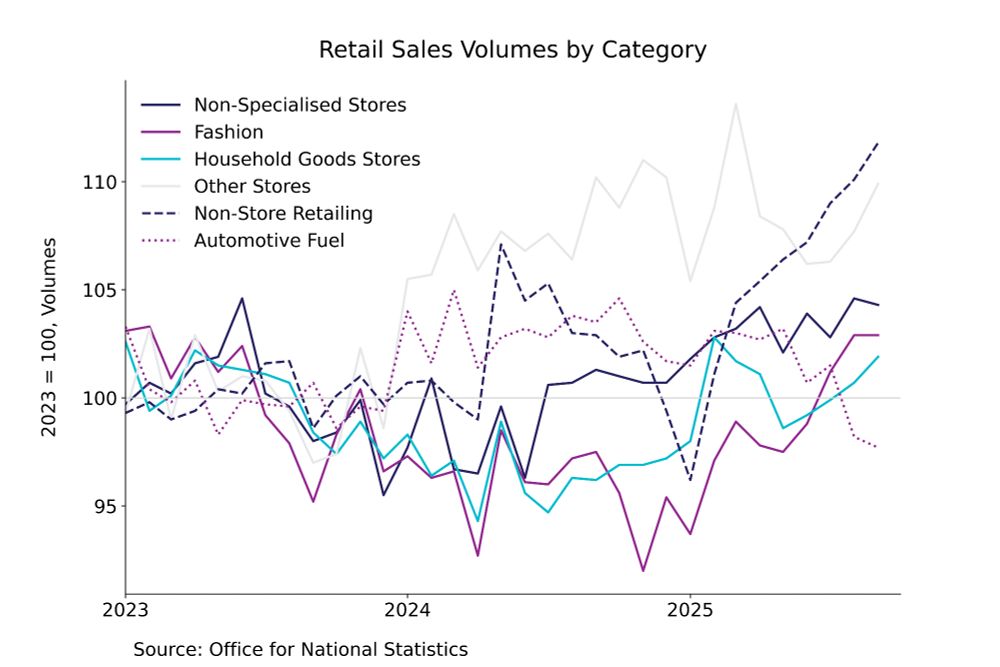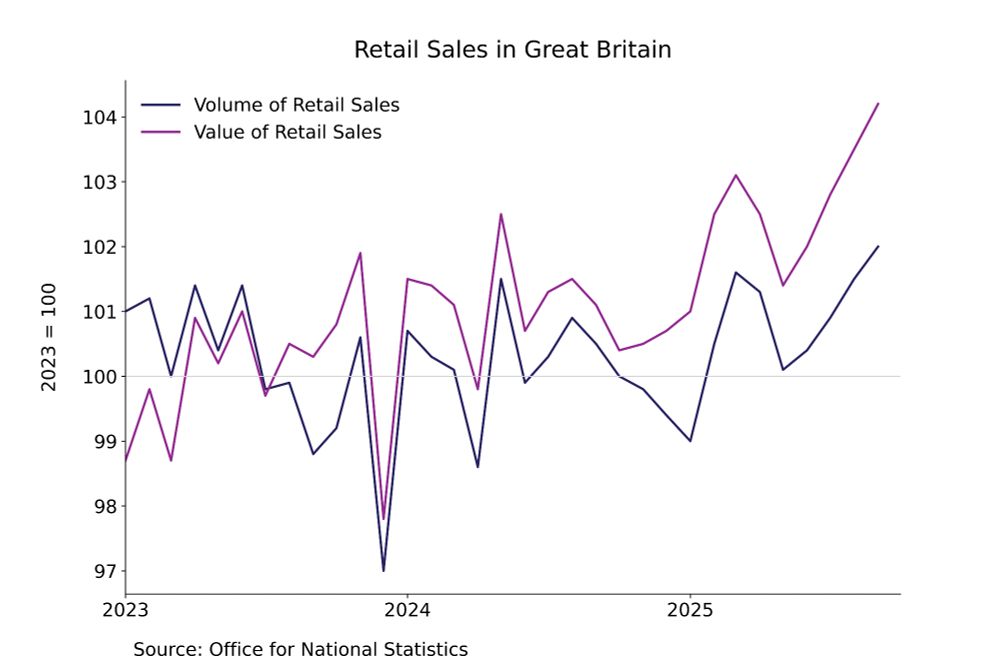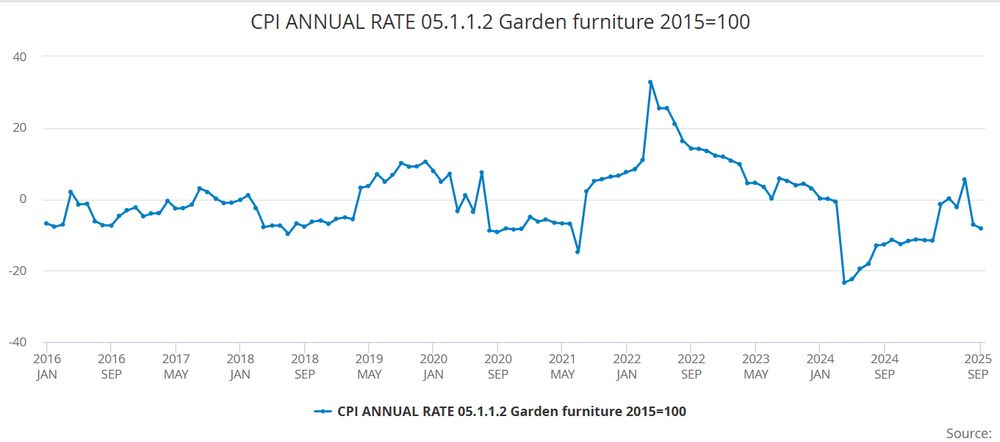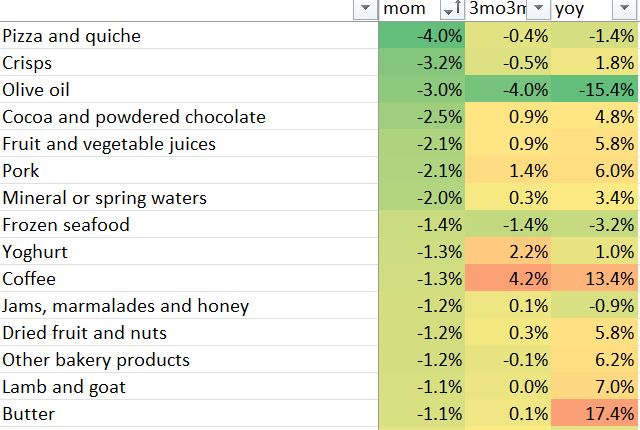Harvir Dhillon
@harvirdhillon.bsky.social
310 followers
130 following
440 posts
Economist at the British Retail Consortium 🛍️
UK macro, retail and #costofliving 📈👨🏽💻🇬🇧
Opinions my own etc
Formerly Experian
Leicestershire, United Kingdom 🦊
Posts
Media
Videos
Starter Packs
Surprise drop in food prices means that the CPI remains unchanged at 3.8%. This is the first monthly decrease in food prices since May 2024.









